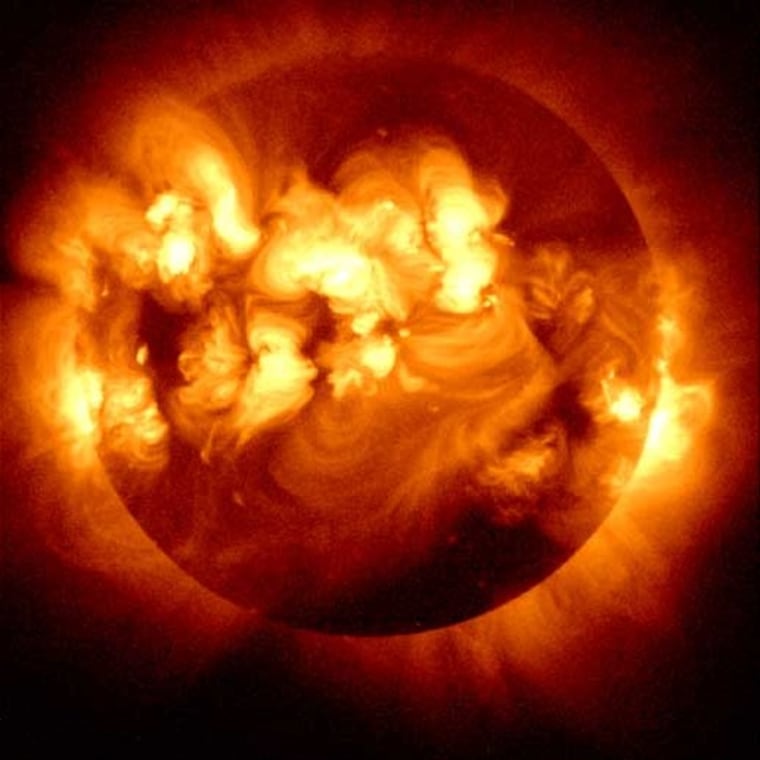A new tool for forecasting flares may soon be available to scientists, one that promises to be twice as accurate as current models. The new technique analyzes sound waves generated by magnetized fluids swirling inside the sun.
Forecasting a solar flare is a bit like predicting the path of a tornado: It's a lot easier once it makes an appearance.
Yet early warning is crucial. Solar flares can trigger disruptions and errors in GPS signals and other equipment receiving radio waves that bounce off or travel through the ionosphere — the layer of charged particles surrounding Earth's atmosphere that gets kicked up by solar activity.
That's a concern for activities requiring precision navigation, such as landing planes. Solar flares can even affect power grids on Earth.
"You get this faster, twisting motion that then slows down to almost nothing and then the flare. It tells us how big the flare is going to be and that it's coming — maybe a day or two in advance," said Alysha Reinard, a solar physicist with NOAA in Boulder, Colo.
Reinard and colleagues used archived solar seismic data collected by ground stations to look for correlations between motions in the magnetic fields and subsequent flares. Analysis showed a pattern, and using it, the team accurately predicted up to half the flares that occurred between 2001 and 2007, the years the seismic data was available.
"That's quite a bit higher that people had done before. The forecasting group is pretty excited about this," Reinard said. "Hopefully we can get to a stage where it's operational soon."
Thomas Bogdan, who heads NOAA's Space Weather Prediction Center, says forecasting flares is probably his team's most difficult challenge because the highly energized, magnetized photons released during a solar flare move at the speed of light, making the 193-million-mile journey to Earth in just eight minutes.
"When it's here, it's here. There's no way to get any more advanced knowledge," Bogdan told Discovery News.
Current forecasting models rely heavily on comparing observations of the sun's active regions with historical data. Forecasters then issue probabilities, similar to hurricane warnings, that a flare of a certain magnitude will occur within 72, 48 and 24 hours.
"What we currently do now is the best that's out there, but it's pretty archaic," Bogdan said.
Reinard's research will be published in this month's Astrophysical Journal Letters.
